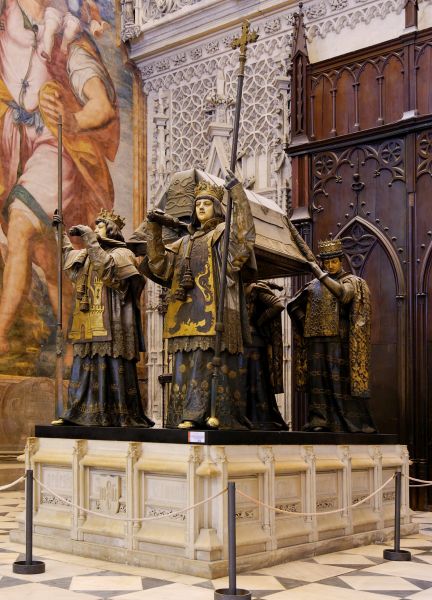
The remains of Christopher Columbus were moved around many times, even across the Atlantic Ocean. Eventually, they were stored in the famous cathedral in Seville, where they still remain.
On this day in 1506 the famous maritime explorer Christopher Columbus died. He died in the city of Valladolid in Spain, located in the area of Castile. The capital of the Spanish countries at that time was precisely Valladolid. Specifically, the seat of the court of Ferdinand and Isabella, the Catholic monarchs who sent Columbus to the famous journey across the Atlantic Ocean, was there (Madrid became the Spanish capital later).
Columbus’s remains were at first interred at Valladolid. Later, they were moved to Seville, and then much further – across the Atlantic Ocean to Santo Domingo (in what is now the Dominican Republic). When the French occupied Santo Domingo, Columbus’s remains were transferred to Cuba. After the Spanish-American War, in which Spain lost Cuba to the United States, the remains were moved back to Spain and placed in the famous Cathedral of Seville, where they remained until now.
Seville Cathedral, where Columbus’s tomb is today located, is the largest cathedral in the world (the reason for this is the fact that larger Catholic churches, St. Peter’s Basilica in Vatican City and the Basilica of Our Lady of Aparecida in Brazil, are not the seats of bishops). Columbus’s tomb in Seville Cathedral was built in the form of a catafalque, so that his coffin is carried by four figures – the kings of Castile, Leon, Aragon, and Navarre.




